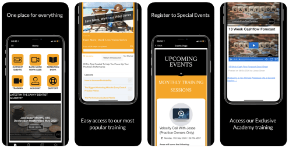An empty appointment book is the stuff of nightmares for practice owners.
You can lie awake at night worrying about it. Wondering how you’re going to pay the bills next month.
But it’s all so expensive. And such a risk.
You’ve heard you “need to spend money to make money” but that’s scary when you’re not making ends meet.
The good news is that there are things you can do to solve the problem. Actions that you and your team can take to get your appointment book filled, without spending a cent on advertising.
These things aren’t complicated. They’re simple, and you can start implementing them today.
Convert Price Shoppers
All practices get calls from price shoppers. You know the drill, “How much do you charge for a crown?” All too often we let these people slip through our fingers, but they’re a golden opportunity to gain a new patient.
You see, these people are looking to buy. All you have to do is give them the right information.
This doesn’t mean you need to undercut the quotes they’ve already received, or promise them cheaper rates than any other dentist in town. It means you need to build rapport and give the caller the information they need to make an informed decision.
Price shoppers can absolutely be converted, with the right framework and approach.
Stop Cancellations
Cancellations are frustrating and costly, but the good news is that they’re also avoidable. In fact, cancellations are usually the responsibility of the practice, not the patient.
There are two main ways to prevent cancellations:
- You need to build value, so your patients prioritise your services
- And you need to gain appointment commitment.
When your patients value and prioritise your services, they’re more likely to keep their appointments. And when your patient commits to attending their next appointment, they’re likely to keep that promise.
And it doesn’t have to be pushy or aggressive – gaining commitment can be done in a very elegant and natural way.
Mine Your Database
Most dentists have a database of patients, however most of those patients are inactive.
They’re people who’ve been in a few times and intended to return but didn’t. That’s normal.
But that doesn’t have to be the end of the story. All those inactive people in your database can be reactivated.
You don’t even have to be pushy or try any sleazy sales techniques. All you have to do is check they’re OK and offer to take care of their health.
A great way to approach this would be by saying something like:
“Good morning Mr Smith, this is Carrie calling from Bespoke Dental Practice, Dr Green’s surgery. Dr Green has asked me to give you a call as we have been reviewing your file this morning. At your last appointment, Dr Green diagnosed a crown for a tooth in your lower left quadrant as the tooth was cracked. He is concerned that this is a severe fracture and left untreated may result in a root canal, which is a costly procedure. So, he asked me to get in touch with you to schedule an appointment. We have an appointment available at 9.30am this Wednesday or Thursday at 2 pm. Which one of those suits you best?”
The key to getting this to work is to have a clear reactivation process and to start with the people who’ve become inactive most recently.
Most business owners start with the patients who became inactive first – or those they haven’t seen for the longest time. But those who have more recently dropped off are far easier to reactivate.
Set Individual Recalls
Recall periods don’t have to be generic. You don’t need to stick to a general 12-month or 6-month schedule. Instead, set recall periods specific to each patient.
And remember that the purpose of an appointment is to make another appointment. Before patients leave the practice, they should have their next appointment booked.
Here’s an example of how you might do that.
Receptionist: “OK, James can we book your next appointment in November?”
Patient: “I’m not sure what I’ll be doing then.”
Receptionist: “That’s OK, let’s book the appointment now so you are in the book and you can let us know when it’s closer to the time if we need to move the appointment. This way you can choose a day and time that works for you. Which day is better for you?”
Patient: “Wednesdays.”
Receptionist: “And do you prefer mornings or afternoons?
Patient: “Afternoons.”
Receptionist: “Great. We can do 3 pm or 4.30 pm on Wednesday 29 November.”
Patient: “4.30 pm.”
Receptionist: “Thanks, James, we’ve got you booked in at 4.30pm on Wednesday 29 November.”
Get More Favourites
Go on, admit it. You have favourite patients.
Ones that arrive on time accept treatment and pay their bills. On top of that, you probably like them as a person, and they’re likely to share similar values to you.
And the great thing is that you can get more of those sorts of patients quickly and easily. All you have to do is ask.
A lot of people feel hesitant about asking for referrals because they don’t want to be presumptuous or they feel awkward.
You’ll be pleased to know it’s actually quite a seamless process and is much easier than you think!
Now you have the low-down it’s over to you. You’ve got the scripts, the processes and all the knowledge you need to pull this together.
You can do this.
P.S Want to scale your dental practice and take your profits to 7 figure success?
Me and my team can work with you directly to get you there! Simply book in your FREE 1:1
strategy session, and we can get started on a game plan for you and your practice.



